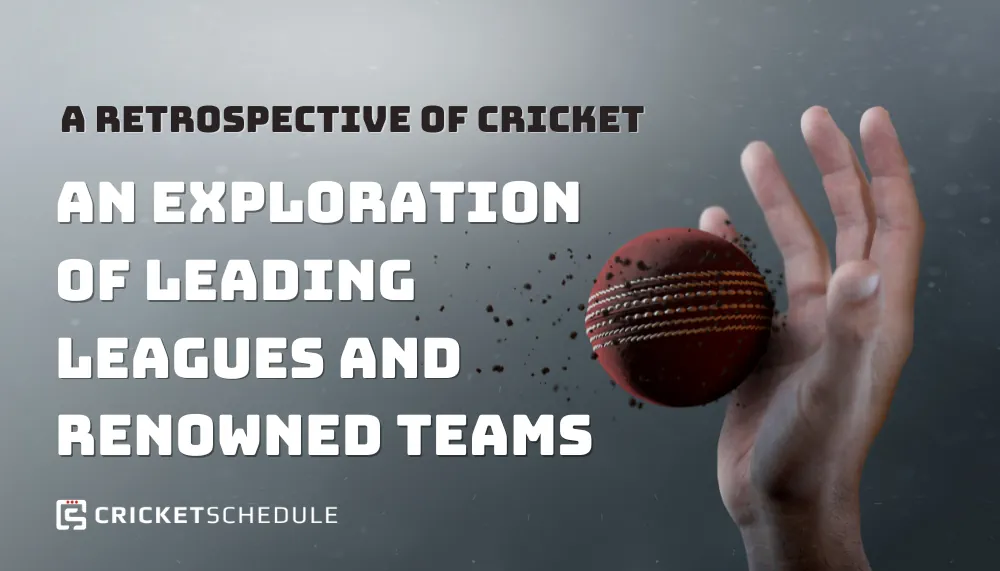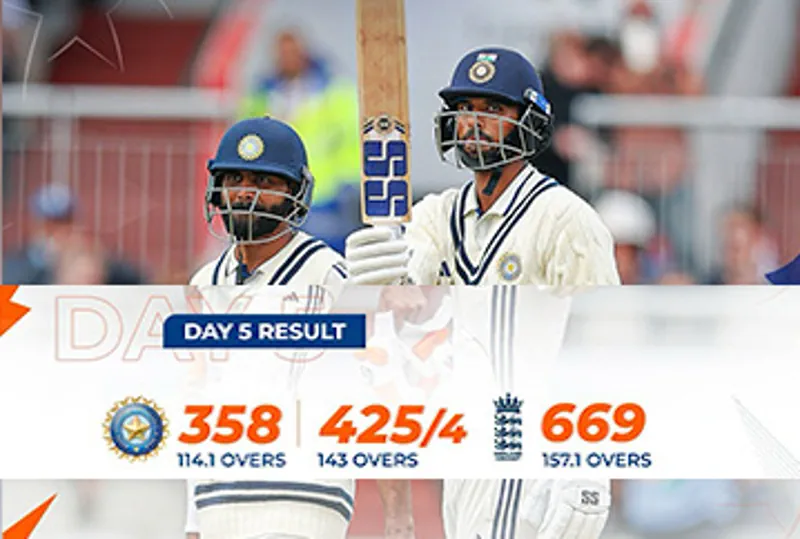
In the annals of sports history, cricket occupies a prominent position, and it is not by chance. Over the years, this beloved game has evolved, providing spectators worldwide with unforgettable moments of extraordinary skill and unyielding team spirit. This article delves into the annals of the game’s history, spotlighting some of the most notable leagues and celebrated teams globally. Stap in as we embark on a journey into the world of cricket.
The Evolution of Cricket Leagues
The emergence of cricket leagues marks a significant transition in the sport. Predominantly, these leagues have ignited new levels of excitement, ensuring the game’s ubiquity across continents.
The Indian Premier League (IPL), arguably the most renowned cricket league organized by BCCI in India, showcases players from all over the globe, becoming an annual spectacle for fans. Since its inception in 2008, the IPL has grown into an event of monumental importance in the cricket calendar, not just for its dazzling matches but also for its significant contribution to player development.
Australia’s Big Bash League (BBL) has also earned a reputation for its high-octane games. Launched in 2011, the BBL quickly established itself as a competition offering a perfect blend of skilled performance and entertainment. It has paved the way for a new generation of cricket players and followers.
The Caribbean Premier League (CPL) also deserves mention for its infusion of island spirit into the game. Often celebrated for its festive atmosphere, the CPL’s blend of cricket and local culture attracts a diverse audience, adding a unique dimension to the game.
Noteworthy Cricket Teams

The sport’s history is dotted with teams that have not only awed spectators with their performance but also left an indelible imprint on the game. A closer look at their performance statistics provides an interesting perspective.
First in line is the formidable West Indies team that reigned supreme in the 1970s and 80s. Under the strong leadership of Clive Lloyd and Viv Richards, this team displayed an impressive win percentage. From 1976 to 1985, the team played 84 test matches, winning an astounding 44 of them (52.4%). Their remarkable win-loss ratio of 4.4 during this period is a testament to their dominance.
Next, we turn our attention to the late 1990s and early 2000s Australian cricket team led by Steve Waugh. During Waugh’s captaincy from 1999 to 2004, the team played 57 test matches, winning 41 (71.9%). The team’s exceptional win-loss ratio during this period set the gold standard for teams worldwide.
In more recent times, the rise of the Indian cricket team has been noteworthy. Under the captaincy of Virat Kohli from 2017 to 2021, the team achieved a commendable win percentage of 60.5%, winning 23 out of 38 test matches. Their adaptability across formats and conditions underlines their exceptional performance in international cricket.
These stats, while showcasing the teams’ success, also underscore their significant influence in shaping the game’s dynamics over the years.
The Influence of Teams and Leagues on Cricket
They have had a profound influence on cricket’s evolution, impacting both the technical and entertainment aspects of the sport. The notable leagues, such as the IPL, BBL, and CPL, have introduced innovative formats like Twenty20, adding an extra layer of thrill to the game. They have also provided opportunities for emerging talents to rub shoulders with the best, enriching their skill sets.
Meanwhile, renowned teams have set standards of excellence for others to emulate. Their influence is palpable in today’s cricket strategies, techniques, and styles. Furthermore, through their performances, these teams have ignited the passion of future generations for the sport.
The Impact of Technological Advancements
As cricket continues to evolve, technology’s role has become increasingly significant. The emergence of the Decision Review System (DRS), Hawk-Eye, and Snickometer have improved decision-making precision, thus fostering a fairer competitive environment.
Furthermore, the advent of analytics and data science in cricket has transformed strategic planning. Teams now rely heavily on data-driven insights to understand player performance, identify weaknesses, and devise winning strategies. This integration of technology is not just enhancing the competitive aspect of cricket but is also creating a more immersive experience for fans.
Future Trends in Cricket
As we peer into the crystal ball, specific trends indicate the future path of the sport. With the game gaining unprecedented popularity, new formats could be introduced to keep the excitement levels high and cater to a broader audience.
Given their massive global appeal, one such direction could be the expansion of shorter-format leagues. These leagues not only attract an expansive range of spectators but also offer players from non-traditional cricketing nations an opportunity to showcase their talents on a grand stage.
Furthermore, integrating advanced technologies in the sport is likely to intensify. From more sophisticated data analytics to augmented and virtual reality, these systems could redefine the viewing experience for fans.
Adding to the future trends in cricket is the potential evolution of sports betting. As cricket continues to grow in popularity and accessibility, it’s foreseeable that the gambling landscape will also transform.
Regulations around betting on upcoming cricket odds could become more streamlined, offering secure and regulated platforms for enthusiasts. The increasing incorporation of advanced data analytics in cricket could also change the betting environment. Punters may rely more heavily on detailed performance statistics and predictive models to make informed decisions.
Regarding the betting market, the rise of micro-betting could be a game-changer. This format allows spectators to place wagers on specific events within a match – like the outcome of a particular over or the number of runs a player might score. This could add an additional layer of excitement to the viewing experience while potentially creating new revenue streams for the sport.
Lastly, with growing awareness about fitness and injury prevention, we could see a greater emphasis on athlete well-being. Enhanced training methodologies, better-equipped medical teams, and a focus on mental health could become more prominent in cricket.
Conclusion
The vibrant journey of cricket mirrors a compelling narrative of evolution. The introduction of prestigious T20 leagues like the IPL, BBL, and CPL has given cricket a new dimension, introducing a blend of tradition and innovation. Noteworthy teams have etched their legacy through their performances, inspiring future generations of cricketers.
Technology has brought a wave of transformation, facilitating fairer competition and more strategic gameplay. Above all, cricket’s ability to unify diverse cultures and foster international camaraderie has solidified its status as a beloved global sport. As we anticipate cricket’s future, we remain excited about its possibilities, promising continual growth and thrilling moments.
Also Read:
- IND vs ENG: Jadeja, Sundar, Gill Hundreds Help India Earn Dramatic Draw Against England in 4th Test
- “If There Are No Bilateral Matches, Why Play in Multination Events?”: Azharuddin on India-Pakistan Asia Cup Clash
- Men’s Asia Cup 2025 To Be Held In UAE; ACC
- Ben Stokes Creates History With 11,000 International Runs And Rare 7,000 Runs-200 Wickets Test Feat




